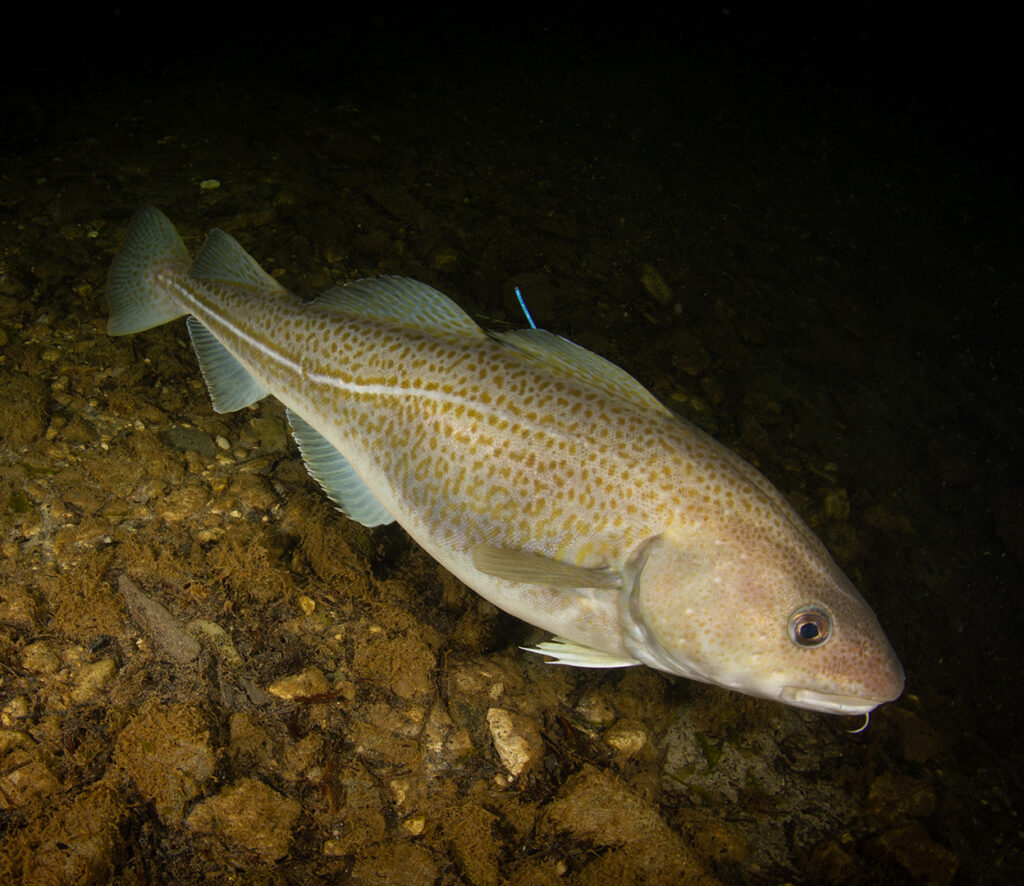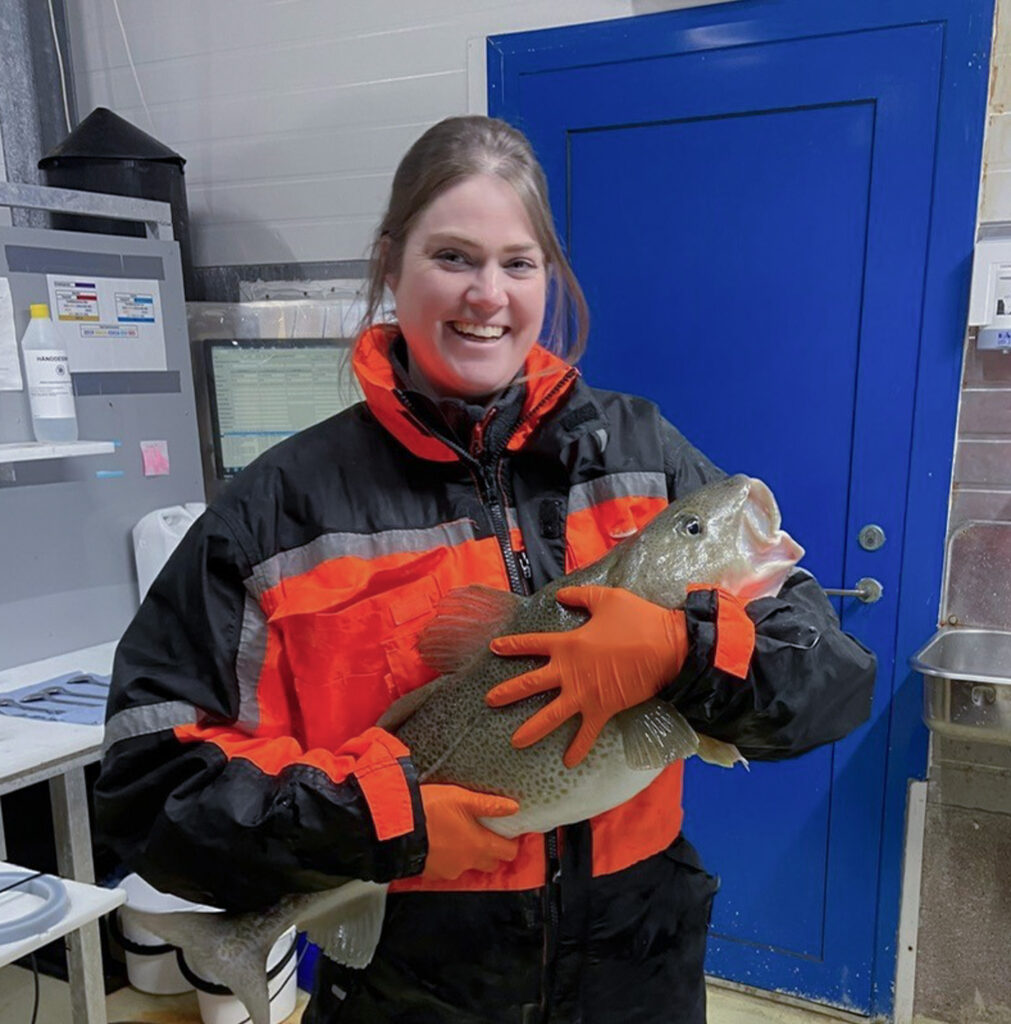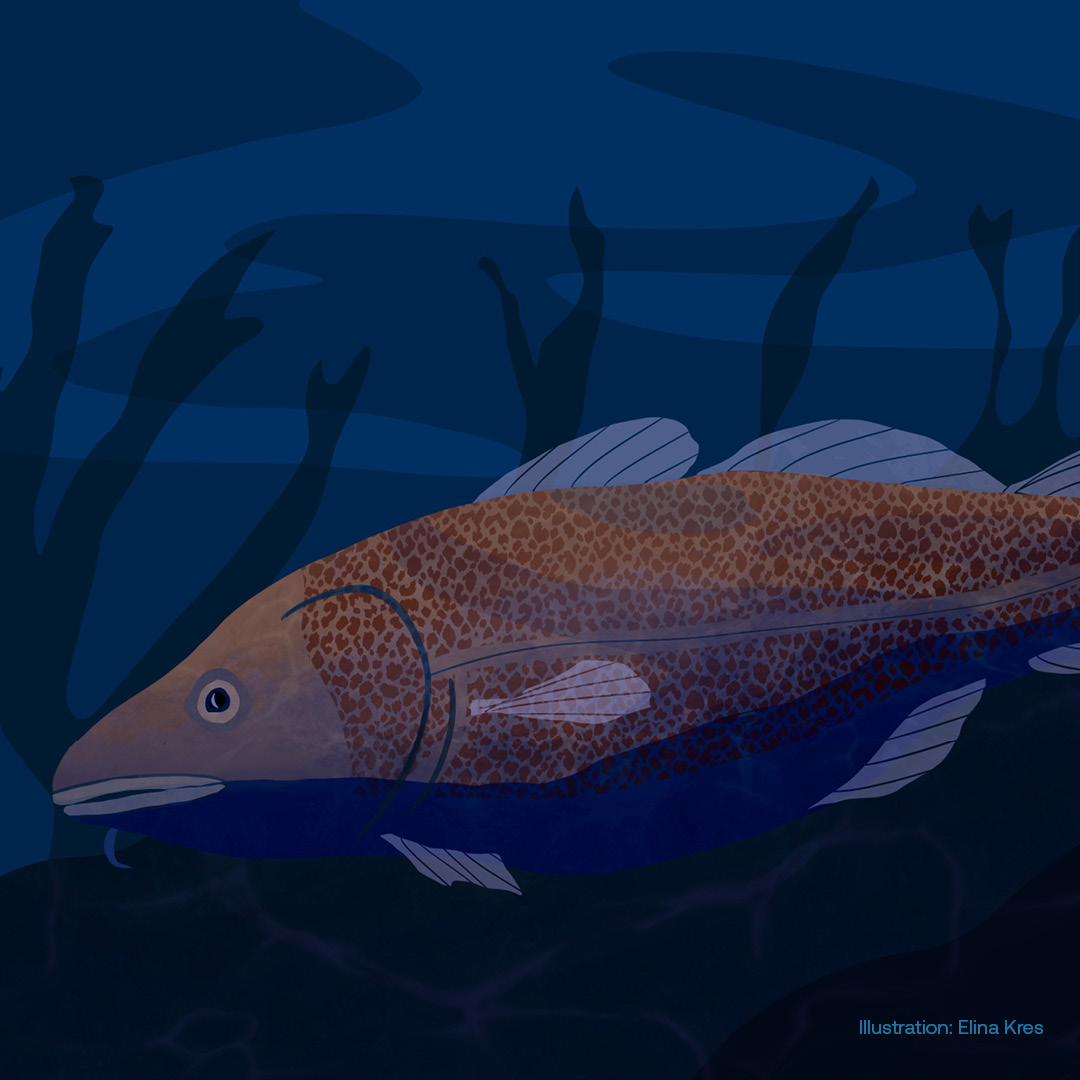What does the project ReCod – release of small cod in the Baltic Sea have in common with a Norwegian breeding programme for cod to promote cod farming for human consumption? Not much it may seem, but even differences mean that there is a lot of knowledge and experience to share.
’Even though we have different goals for our activities, and research different populations of cod, we are still dealing with the same species and there is much to learn from each other,’ says Johanna Fröjd, project manager for ReCod, who has just spent a week at the Norwegian Nofima research station in Tromsø.
The research station is located by the sea, snow-capped mountain peaks loom on the horizon and reindeer graze along the road. But Johanna only has eyes for one thing – cod. She is here to visit Öyvind Johannes Hansen, project manager of the national breeding programme for cod that has been running for 20 years. The aim of Johanna’s visit is to obtain some of the knowledge that Öyvind and his team has accumulated over the years and to share her experiences with rearing and hatching cod larvae for restocking.
‘There is a big difference between the cod kept here at Tromsø and the cod we keep within the project ReCod. The Tromsø cod are tame and swim up to greet you, complete opposite behavior to what I’m used to,’ says Johanna.
It´s not that strange, considering that the cod at Tromsø are the seventh generation bred to be calm and grow large quickly.
About Nofima
Nofima is a food research institute that conducts research and development for aquaculture, fisheries and food. One of their research programmes is the breeding programme for cod, which aims to provide new knowledge to develop cod farming for food production. The programme is funded by the Norwegian government.
In the early 2000s, Norway started to focus on breeding cod for food production. The cod were kept in large bags out at sea, but they were stressed and grew poorly, making cod farming trials unprofitable. Since then, Nofima has been breeding calm and fast-growing cod, simply by removing characteristics that were present in the stressed cod.
’In the past, when the fish were more stressed, the industry had disease outbreaks of vibrosis*. It’s been years since that last happened. Fish that are in good condition have better resistance to various diseases, so it is quite possible that the lack of outbreaks is linked to the fish being calm and not stressed,’ says Öyvind.

Velmurugu Puvanendran looks at a cod larvae that has used up its yolk sac and started eating. Photo: Johanna Fröjd, BalticWaters
The cod kept within ReCod all come directly from the Baltic Sea. They live at the Ar research station on Gotland with a single purpose – to spawn so that new small larvae are hatch and released into the sea. Today, there are only a few places in the Baltic Sea with the oxygen and salinity levels required for cod to successfully reproduce in the in the wild. ReCod aims to test whether it is possible to help cod pass the vulnerable egg stage and thus increase the number of small cod in the sea as a step in strengthening the fish population.
But life on a research station is a big change – from swimming freely in the sea to a life in a tank. After about 3 years, when the fish have fed and spawned naturally, they are released back into the sea to ensure genetic variation in the cod larvae hatched and released.
’The cod within ReCod are wild and this means that we have to take extra care when handling the fish, because even though we do everything we can to keep them comfortable and happy, it is inevitable that they can be stressed when we need to handle them,’ says Johanna.
The cod in the national cod breeding programme will not swim back into the sea.
’Unlike us, who are keeping our fingers crossed that as many of the released cod larvae as possible grow into large cod, Norway has a completely different attitude. Here there is a concern that farmed fish will get into the wild and affect natural stocks,’ says Johanna.
But this is also what makes the knowledge exchange between Nofima and the project ReCod particularly interesting.

Baltic cod. Photo: Madeleine Kullenbo, BalticWaters
Because ecosystem restoration is also highly topical in Norway, although it does not yet focus on the restocking of endangered fish species.
’There is a desire to keep up to date on restocking as part of ecosystem restoration work, although the Norwegian programme does not currently involve it. But it’s great that our project, that has been running for almost five years, have experiences to offer a research programme that has been running for 20 years. It makes me proud,’ says Johanna.
‘Recod is highly interesting because we also have declining cod stocks in parts of Norway. I think we need to look more closely at whether we have the same challenges as the Baltic cod while there are still fish left in the sea. I also believe that, in the future, knowledge from aquaculture will be valuable and used even more for ecosystem restoration purposes,’ says Öyvind.
The visit to Tromsø has given Johanna valuable insights, especially in how flexible a research laboratory can be built, which is important input to the establishment of BalticWaters fish laboratory.
’There is a big difference between the laboratory in Tromsø and BalticWaters´ fish research laboratory and that is that the Norwegian laboratory has flow-through system of water while we will have recirculating water. Our challenges will be different, while at the same time many parts overlaps,’ says Johanna.
BalticWaters fish laboratory
To enable new research on Baltic Sea fish and support restocking of endangered fish species, development of aquaculture and knowledge building, BalticWaters is establishing a new fish research laboratory – the first of its kind in the Baltic Sea region. The fish laboratory is being built in Studsvik Tech Park outside Nyköping, Sweden, and is expected to be completed in 2025. The laboratory will also house the Foundation’s large-scale project ReCod, and will be open to researchers and companies from all over the world who want to work with the Baltic Sea’s cold-water fish such as cod, herring and sprat.
Water – flow-through or recirculating – which is preferable?
This question cannot be answered because it depends on the species of fish kept at the station and the conditions required by the station’s activities. At the Ar research station, where the ReCod project is currently being carried out, the water is recirculating, as it will be at BalticWaters fish laboratory. Water in tanks and hatcheries circulates in so-called Recirculating Aquatic Systems (RAS), which makes it possible to control salinity, for example. This is important, among other things, to create the right conditions for spawning and hatching in the tanks.
But perhaps most exciting of all about the visit was to hear more about the Tromsø team´s 20 years of experience with cod larvae.
‘I have had the opportunity to familiarise myself with the life of cod larvae. A big challenge for them is viscosity, which is the difficulty to move in water. For them, it’s like drilling through mud when they need to get somewhere,’ says Johanna.
Something as innocent as surface tension can be a threat if you are millimetre-sized cod larvae. They can simply get caught in the surface tension, not being able to free themselves, so it’s important to have a feature that breaks surface tension in the hatchery.
´It’s amazing that you can be so small that you can get caught in the surface tension, but then become such a big and tough hunter,’ says Johanna.

Johanna with a cod at Nofima research station in Tromsø
The ReCod project and Nofima’s national cod breeding programme may not seem to have much in common at first glance. But there is a lot to learn from each other. Because even though the operational goals and cod population are different, they are both working with the same mysterious fish species. And there will always be more to discover about cod.
’I believe that this kind of co-operation, management knowledge and aquaculture knowledge, is the future,’ concludes Öyvind.
And we cannot do other than agree with him.
*Vibriosis is a prevalent bacterial disease affecting marine fish caused by Vibrio anguillarum.

About ReCod
The project is carried out at the research station Ar on Gotland – in the middle of the Baltic Sea. The goal of ReCod is to conduct experiments with the release of 4–6-day-old cod larvae at several locations along the east coast to investigate whether the larvae survive and successfully establish themselves. If the experiments are successful, there is the possibility of reintroducing cod in the Baltic Sea at more locations, thereby increasing the chances of preserving and protecting the unique eastern stock. ReCod is implemented and financed by BalticWaters and Uppsala University.
Would you like to know more? Visit the project’s website.

